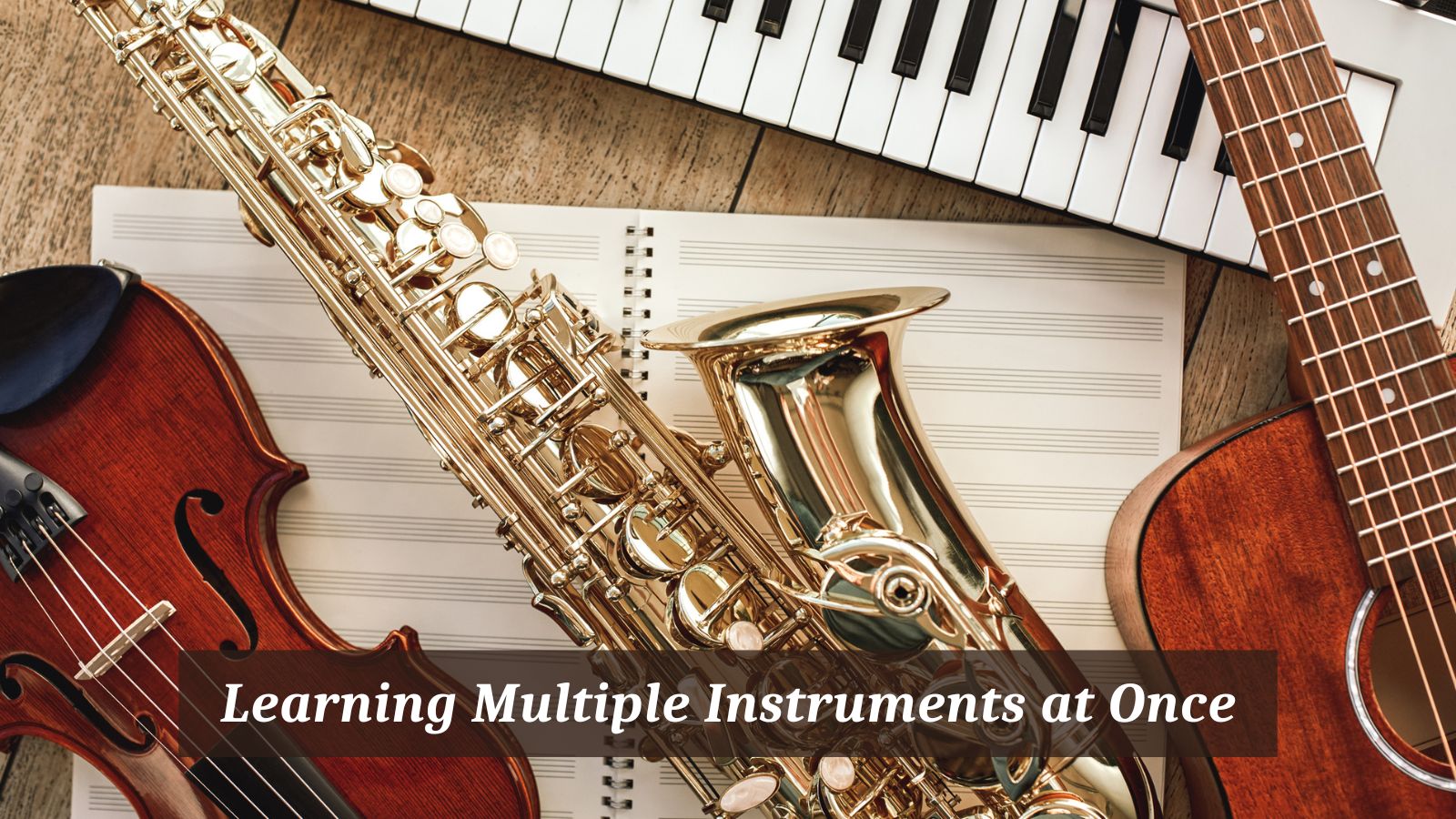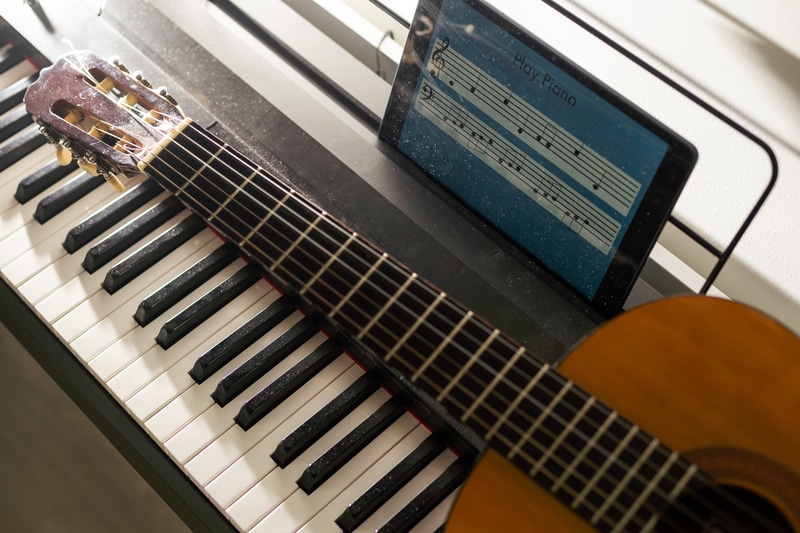
Learning more than one instrument at a time is achievable. Most musicians are competent in their primary instrument and a second instrument.
Most of us are taught that it’s best to stick with one thing at a time and finish it before starting the next thing. While this is good advice in most areas of life, it is possible to learn more than one instrument at a time—all it takes is hard work and dedication.
Will I confuse myself?
Unlike learning a new language, where each has its own rules and syntax, music has a universal language. Learning two languages simultaneously can lead to confusion about the rules, learning two sets of grammatical rules, syntactical structures, and more.
While it isn’t impossible to learn two languages simultaneously, most teachers agree that it is better to master one at a time.
Music, however, has a universal language that all instruments follow. Instruments may sound different and have different playing techniques, but the commonality is in place.
Students learn multiple subjects at school simultaneously, and while they’re very different, they still cope with their other school subjects. What most people worry about is learning the technique and ‘mechanics’ of different instruments simultaneously.
Learning Multiple Instruments At Once
We’ve listed some helpful tips to help you learn two instruments simultaneously.
- If you aren’t sure which instrument(s) you’d like to learn, speak to a few teachers and attend a few introductory lessons. Or, visit a music school that teaches various instruments to learn about different instruments and pick the two that appeal the most to you.
- First, you’ll need to find a teacher for each instrument. Start with the first instrument of your choice. For example, the piano will give you a good grounding in reading sheet music and a solid understanding of music theory and terminology. After a few weeks, you’ll have a solid music foundation and be ready to take up the next instrument.
- Establish a practice and learning routine for each day. Remember to take breaks between practicing your instruments to allow your brain to retain the information you’ve learned during practice. Regular intervals also prevent physical and mental burnout. Dedicated practice is required to master an instrument, which means not practicing each instrument less than needed—you won’t make significant progress and will feel like giving up entirely. Dedicate the same amount of time to practicing each instrument.
- Don’t jump between instruments—this is the worst thing you can do, and you’ll never make any progress or learn the basic required techniques to move forward. You’ll also confuse yourself and may, sadly, lose interest in music altogether.
Benefits of learning multiple instruments
Apart from becoming proficient in more than one instrument, there are other benefits.
- You’ll gain a thorough understanding of music theory
- Playing more than one instrument can help you if you play in a band—for instance, if the bass player is ill, you can fill in their parts because you can play the bass guitar and the piano. You’ll also be able to harmonize their parts into your parts.
- Tying in with the above, when you play different instruments, you get a better idea of how they work in general and how all the instruments work together as a whole.
- Learning and playing two instruments (or more) will make you a well-rounded musician. You’ll better understand music theory, improve your aural skills, and have a better sense of melody, harmony, and musical form.
- Whether band directors, orchestral conductors, or leading the local church, conductors should aspire to learn an instrument from each group to enhance their professional careers. It will also help you understand the finer nuances and how rhythms, melodies, and harmonies work together.
- You can do session work in either instrument when you’re proficient in two (or more) instruments. You’re not bound to the seasonal requirements—sometimes a studio will need a French horn player but not a saxophonist, so you’ll still be in demand.
Negative aspects of learning multiple instruments
Unfortunately, there is also a bit of a downside when you learn to play instruments at the same time. Yes, it is improbable that while learning the trumpet, you’d try to blow on the violin to get a sound of it…
- You have to be careful to ‘cross-contaminate’ the playing techniques. For example, blowing and playing a trumpet is vastly different from blowing and playing a clarinet. A good teacher will guide you in this aspect, but you must be honest with them when you are learning two instruments simultaneously.
- You need to budget extra for your instruments. While piano lessons may require you to purchase a piano once-off, there is still the upkeep and tuning to consider. Woodwind instruments need reeds and other accessories, while brass instruments usually don’t need much maintenance. Strings like the violin and cello will need replacement strings, rosin, the occasional bow rehair, etc. The costs of playing two instruments can add up over time. Make sure you have the necessary funds to service your instruments and keep them in shape.
- It takes time and commitment to learning an instrument. If you cannot make time for practice, you will not show progress in either instrument.
- Motivation also plays a significant role—you’ll have to be patient. Your brain must absorb twice as much information when learning two instruments. Each instrument has its unique challenges, and you need to recognize this and be prepared to put in the time and effort to manage your schedule.
Conclusion
We’ve looked at how it is possible to learn two instruments simultaneously. Our advice would be to start with the primary instrument, and once you have an excellent understanding, move on to the next one.
The key is to have fun and enjoy the learning process; a whole world of possibilities will open up for you when you have mastered two instruments.

